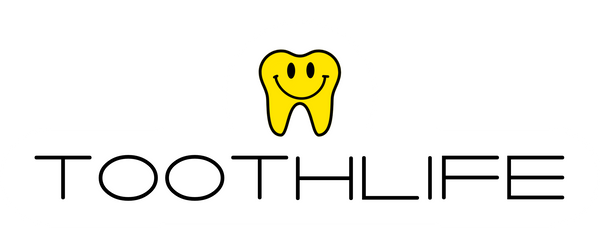As we close out the month of April, our focus is of course Oral Health Month, and specifically Oral Cancer Awareness.
As part of our commitment to promoting good oral health practices, we are dedicating this month to raising awareness about oral cancer and the importance of regular screenings.
Oral cancer can be difficult to detect in its early stages, which is why diagnostic aids like fluorescence devices and salivary tests are becoming increasingly important. In this issue, we'll take a closer look at some of the light-based systems available, including the ViziLite Plus from DenMat, Microlux DL from AdDent, VELscope Vx from LED Dental, and OralID from Forward Science Technologies.
By learning more about these tools, we hope to empower our readers to take a proactive approach to their oral health and stay on top of any potential issues. Perhaps you may consider incorporating a system like this in your practice.
Oral Cancer Devices To Consider
Diagnostic aids, such as fluorescence devices and salivary tests, can be used by dental professionals to assist with the screening process for oral lesions that are not visible to the naked eye. Light-based systems can improve the detection of abnormalities by using tissue reflectance and fluorescence, with some using light and dyes while others only use fluorescence light. While fluorescence devices are highly sensitive to dysplasia and cancer, they can also detect vascular normal tissues. Dental professionals should be familiar with the normal patterns of oral cavity fluorescence to detect abnormal patterns more easily.ViziLite Plus by DenMat uses TBlue as a marker for suspicious lesions and incandescent light to identify any suspicious areas. The Microlux DL by AdDent uses a chemiluminescent light to detect any abnormal tissue, similar to early detection procedures for other cancers. VELscope Vx by LED Dental enhances visualization of mucosal abnormalities using tissue fluorescence, while OralID by Forward Science Technologies uses blue light to identify abnormal lesions at an early stage. The latter is an affordable choice with product training included and no disposables required due to its unique design. All of these systems offer a quick, non-invasive and painless way to detect oral abnormalities, and can be integrated into routine hygiene exams.
Diagnostic Aids & The Screening Process
Since many lesions are not visible to the naked eye, diagnostic aids, such as fluorescence devices and salivary tests, can be useful in assisting dental professionals. Light-based systems use tissue reflectance and fluorescence to enhance the oral screening exam. One category of light-based systems uses light and dyes to assess the oral cavity, whereas the other category only uses fluorescence light to detect abnormalities. Fluorescence devices are particularly sensitive to dysplasia and cancer but can also be sensitive to vascular normal tissues. Dental professionals should be familiar with the normal appearance and patterns of oral cavity fluorescence for abnormal patterns to be more easily detectable.Microlux DL 
With the Microlux DL from AdDent, a simple mouth rinse is used first. Then, a chemiluminescent light is used to reveal any abnormal tissue, even if it is not visible to the naked eye. Microlux DL is similar to proven early detection procedures for other cancers, such as the mammogram, the Pap smear, and the prostate-specific antigen (PSA) test. The Microlux DL exam is recommended to be performed annually.
OralID 
The OralID system from Forward Science Technologies uses fluorescence technology in the form of a blue light that allows a clinician to identify oral cancer, pre-cancer, and other abnormal lesions at an earlier stage. The battery-operated, handheld device emits a visible blue light (435–460 nm) directly into the oral cavity. Included is protective eyewear that enhances the visual effects of the blue light during the oral exam. When the blue light shines on healthy oral tissue, it fluoresces green. However, when it shines on abnormal tissue, it appears dark, due to a lack of fluorescence. With no disposables due to its unique design (like a flashlight), it is an affordable choice with product training for the team included.BrushTest
University of Toronto Biopsy Kits

With over 7,000 new cases per year, the Toronto Oral Pathology Service (TOPS) at the Faculty of Dentistry, University of Toronto is one of the largest oral pathology diagnostic laboratories in Canada. They provide expert diagnostic services to dental and medical professionals across Canada and internationally while remaining actively engaged in graduate and undergraduate teaching and innovative research.
Their services include standard tissue processing, staining and immunohistochemistry. The average turnaround time for specimens is 5 business days (from receipt of a specimen to issuing a report.)
Biopsy kits are provided to dental offices at no cost. To request a biopsy kit, call us at 416-864-8243 or email oral.pathology@dentistry.utoronto.ca indicating the number of kits required and the full name of the dentist, office address and telephone number.
Visit their website to learn more about sending a sample Cost = $110 CAD
Salimark OSCC
The Salimark OSCC Salivary Diagnostic Test from PeriRx is indicated for usage when a suspicious lesion or an abnormality in the tissue is detected during the visual examination and/or a fluorescence exam. The painless saliva test is the first commercial saliva test for the early detection of oral squamous cell carcinoma. This system uses biomarkers in saliva that reflect cancer activity.It is suggested that “SaliMark OSCC test is the only oral cancer test on the market to detect the biomarkers present in cell-free salivary RNA. The salivary RNA is preserved with a patent reagent, which stabilizes the RNA for 7 days at room temperature. This test has a sensitivity of 96% with 98% negative predictive value.” For more on salivary transcriptome markers for the early detection of OSCC, check out this clinical trial.

